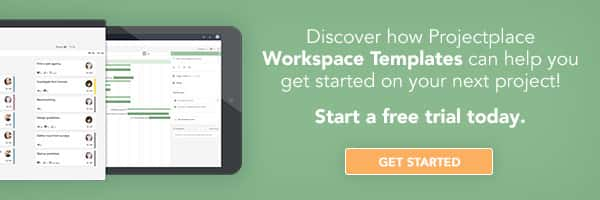![Improving Cross-Department Communication Throughout the Business [Interview]](https://blog.planview.com/wp-content/uploads/2017/10/Improving-Cross-Department-Communication-Throughout-the-Business_750x400-750x400.jpg)
How well are you communicating within your team and with other areas of the organization about project work? Often, when cross department communication suffers, project deadlines are missed or fail. So, you can imagine the challenges are compounded when those people you need to communicate with on projects are also geographically dispersed. Collaborative work management can help teams across different departments stay connected.
I recently sat down with Nikki Glaser, enterprise demand generation manager to understand how she and others on her team are using ProjectPlace by Planview to improve cross- department communications and break down silos. Here’s what she had to say…
Leyna: What were some of the challenges you experienced before leveraging ProjectPlace to improve cross-department communications?
Nikki: Before Projectplace, I used email and scheduled a lot of face-to-face meetings to collaborate and share information with extended team members. Collaborating wasn’t easy – once the meeting was over, I had to manage all the files and details from my desktop and via email. If we needed to collaborate on a content or creative piece, I sent it via email, and had to track who had the last edited version. Often I had to consolidate changes from multiple people into a single document – which created extra work. In addition, collaboration was slow. Some people responded via email, while others didn’t. I couldn’t easily know who still needed to provide feedback. I remember going though different emails chains to find different versions. I knew there had to be a better way.
Leyna: How do you use ProjectPlace to make cross-department communications plans, and what kind of work do you manage?
Nikki: I have a ProjectPlace workspace dedicated to fostering communications with solutions marketing and our extended demand generation managers in Europe. Together we plan, collaborate, and execute on different demand generation activities including content development, events, webcasts, and more, so we are all in sync with what we intend to deliver. The global demand gen team can then leverage efforts done at headquarters and localize activities and campaigns to create demand globally. One thing I love about ProjectPlace is its versatility. If I have a special project, I can create a dedicated workspace for the initiative and invite others to participate and collaborate.
Leyna: How do you use ProjectPlace to communicate with teams outside your department?
Nikki: I use the ProjectPlace collaboration features to communicate upcoming and new demand gen activities to the global field, inside sales teams, and solutions marketing. Social features allow everyone to see announcements related to the campaigns I am running in one place – no more digging through emails. Not only will they see a notification when they open the ProjectPlace workspace, but my communications are front and center on the conversations tab. The social features allow people to “like” my announcements or ask questions related to whatever we are collaborating on (content or creative) in the conversation stream, allowing others to participate, know where we are in the process, and offer feedback.
Leyna: How do you use the documents feature with Projectplace? Do you have any best practices to share with our readers?
Nikki: Document management is easy in Projectplace. As part of my campaign communication, I use the document management in ProjectPlace to alert the subject matter experts when it is time to collaborate on a document. As a best practice, I upload shared documents to the documents tab so that 1) there is a source file, and 2) it improves the document management experience. In some cases, that document needs to also be associated to a card or task. I can link the document to the card directly from the documents section, so if any changes are made, there is only one version. ProjectPlace also ingrates with other platforms like Box, which is an added benefit because it saves time! This feature helps all members easily collaborate and provide feedback on important documents and prevents us from having multiple versions. Make sure you have the add-on installed that makes the process seamless – it’s a true lifesaver.
Leyna: What feature(s) in ProjectPlace do you think helps improve cross-department communications most?
Nikki: For me there are two features. First: Breaking out tasks into cards on the Kanban board. I love seeing what needs to get done in cards and who is assigned to them. This helps everyone in the workspace see who owns what – and it creates accountability. Which leads me to the second feature… If you see a roadblock with a card or simply have a question to the owner, the ability to ask questions on a given card is amazing. The owner receives a notification and can communicate quickly to stay on track. I find people are very responsive to comments and feedback in Projectplace. And if other people need to be brought into the conversation, there is a history – so you don’t need to have a meeting to explain the matter. Having a communication chain captured in the card speeds up progress and saves everyone’s time.
Big thank you to Nikki for your helpful answers and best practices. I invite you to learn more about how collaborative work management can help you and your teams improve communication across the different departments and stakeholders in your organization; start a free trail today. There are multiple templates to help you get started. Leave a comment below on which template works best for you and your team.
To learn how ProjectPlace can benefit each department in your organization, check out the following use-case blogs, covering: Public Relations, Human Resources, Blog Management, Cross-Department Communication, Demand Generation Marketing, Event Management, Digital Marketing, Customer Renewals, RFP Project Planning, Sales Team Collaboration, Customer Experience, Solutions Marketing, and Sales Project Management.





